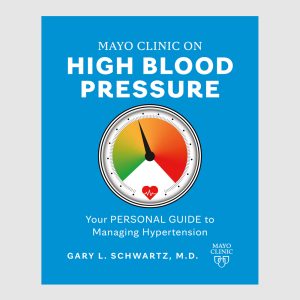
Mayo Clinic does not endorse companies or products. Advertising revenue supports our not-for-profit mission.
If you’ve recently received a pathology report from a biopsy, the many designations can seem overwhelming.
You may wonder: What does your breast cancer’s hormone receptor (HR) status or human epidermal growth factor receptor 2 (HER2) status mean?
Below, you’ll learn more about these important breast cancer designations, along with how a hormone receptor positive, HER2-negative (HR+/HER2-) status can affect your treatment plan.
Hormone receptor status
Some breast cancer cells have hormone receptors inside them that can catch specific hormones that circulate through your body. Some of these cells are sensitive to one or both of your body’s naturally occurring hormones, estrogen and progesterone. If breast cancer cells contain receptors for estrogen, progesterone or both, the hormones can fuel the growth of these cells.
Hormone status of breast cancers includes:
- Estrogen receptor positive (ER+). Breast cancer cells with estrogen receptors are sensitive to estrogen. When estrogen binds to the estrogren receptor, it allows ER+ breast cancers to grow.
- Progesterone receptor positive (PR+). Breast cancer cells with progesterone receptors are sensitive to progesterone and use this hormone to grow.
- Hormone receptor negative (HR-). This type of breast cancer cell doesn’t have estrogen and progesterone receptors, so these hormones won’t allow it to grow. These cells won’t be affected by treatments that block hormones in the body.
Your healthcare professional may refer to ER+ and PR+ cancers as hormone receptor positive (HR+). This form of breast cancer is more likely to respond to therapies that affect these hormones, such as tamoxifen (Saltamox) or aromatase inhibitors. Examples of aromatase inhibitors include anastrozole (Arimidex), letrozole (Femara) and exemestane (Aromasin).
HER2 status
HER2 proteins look like thin spikes or antennas on the outer surface of a cell. HER2-positive breast cancer cells can have extra copies of the HER2 gene. In addition, they can have high levels of HER2 proteins on the surface of these cells. They are associated with cancer that can spread quickly without treatment. However, HER2-targeted therapies, such as trastuzumab (Herceptin), can shut down the HER2 protein, slowing the growth and killing these cancer cells.
HER2-negative status means cancer cells have no or low amounts of HER2 proteins, making them less aggressive. Unlike HER2-positive breast cancer cells, however, HER2-negative cancer cells do not respond to some HER2-targeted therapies.
What’s the outlook for HR+/HER2- breast cancer?
This form of breast cancer is the most common breast cancer type. It has had significant treatment advances in recent years.
In addition to your cancer’s HR and HER2 status, your prognosis also depends on when your cancer was detected. The five-year survival rate for HR+/HER2- breast cancer can be as high as 99% when the tumor is localized to breast tissue. For cancer that has already spread to distant parts of the body, the median survival is roughly five years. However, those numbers are based on studies that were done before recent treatment advances. New medicines are changing these statistics, helping more people with advanced breast cancer live longer.
Treatments for HR+/HER2- breast cancer
Your healthcare professional recommends a plan based on your previous treatments, the stage of your disease and many other factors.
For HR+ breast cancers, healthcare professionals generally recommend endocrine therapy, sometimes referred to as hormone therapy. These medicines either block the hormone receptors and effects of hormones or they reduce estrogen production. They include the following:
- Selective estrogen receptor modulators (SERMs) — such as tamoxifen (Saltamox) — which block the estrogen receptors in ER+ breast cancer cells.
- Aromatase inhibitors (AIs) — including anastrozole (Arimidex), exemestane (Aromasin) or letrozole (Femara) — which reduce the amount of estrogen produced by fat cells.
- Gonadotropin-releasing hormone (GnRH) agonists — including goserelin (Zoladex) and leuprolide (Lupron Depot) — which stop the ovaries from making estrogen. Surgery to remove the ovaries can be an alternative to these medicines.
These medications are generally taken daily for five years. Typical side effects can differ between the AIs and SERMs and include hot flashes, sexual dysfunction, vaginal dryness, and mood and sleep changes.
Recent treatment advances
In addition to endocrine therapy, your healthcare professional may recommend that you undergo one or more of the following newly approved treatments.
CDK 4/6 inhibitors
Other pathways, in addition to hormones, can drive the growth of more-aggressive forms of HR+ breast cancer. Among them are the cyclin-dependent kinase (CDK) 4 and 6 proteins that control cell division. When they are overactive in breast cancer cells, the cells divide and multiply uncontrollably. CDK 4/6 inhibitors block this growth pathway and are most effective in treating HR+ breast cancer when combined with endocrine therapy. These targeted oral medicines include abemaciclib (Verzenio), ribociclib (Kisqali), palbociclib (Ibrance).
HER2-targeted antibody drug conjugates
HER2-negative cancers usually do not respond to HER2-targeted therapies. That’s because HER2-targeted therapies, such as trastuzumab (Herceptin), are antibodies that bind to HER2 proteins like armor, stopping them from triggering cell growth. This cancer-fighting mechanism isn’t helpful in HER2-negative breast cancers with very few, if any, HER2 proteins on their cell surfaces.
However, a newer HER2-targeted medication, trastuzumab deruxtecan (Enhertu), can be used to treat advanced (stage 4) HER2-low breast cancers that contain some HER2 proteins but not enough to be considered HER2-positive. This therapy is an antibody drug conjugate — a medicine that links a small amount of chemotherapy to HER2 antibodies that target HER2-low and HER2-positive cancer cells. The drug works when the antibodies attach to HER2 proteins on cancer cells, and the chemotherapy molecules linked to them are released inside the cancer cells, causing them to die. This direct delivery of chemotherapy to tumor cells spares other healthy cells that aren’t cancerous.
Mayo Clinic does not endorse companies or products. Advertising revenue supports our not-for-profit mission.

Relevant reading
Mayo Clinic Guide to Arthritis, Second Edition
From the rheumatology experts at Mayo Clinic comes a complete guide on arthritis. This book is filled with proven, science-based research on arthritis and its related conditions, recommended treatment plans for relieving joint stiffness and pain, and essential self-care tips to help you live a life free from debilitating arthritis…





















